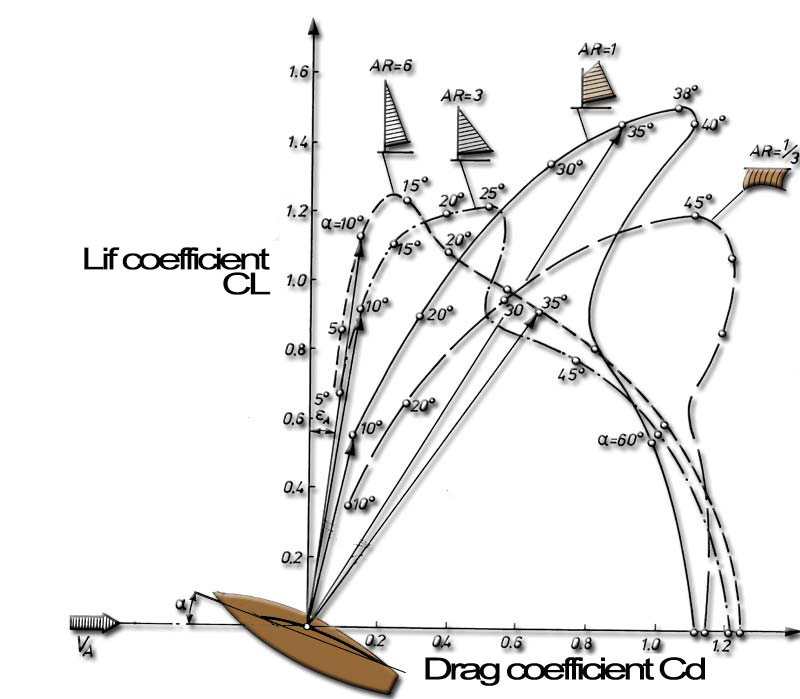Understand and master the aerodynamics of boat's sails:
Les formes de voiles ont evolué suivant les techniques et la connaissance des phénomenes aérodynamiques. Cette évolution des formes de voiles à la recherche des meilleurs coefficients de portances et finesses nous à donné la forme de voile actuelle des voiliers. La finesse représente la capacité à remonter au vent donc la liberté d'évolution du voilier. A l'époque de la navigation à la voile, cette liberté d'évolution par rapport à la direction du vent etait essentielle au dévellopement du transport maritime car elle apportaiForms of sails have evolved following the techniques and knowledge of aerodynamic phenomena. The changing forms of sails in search of the best lift and lift/drag ratio , given the current form of sailing yachts. The lift/drag ratio is the ability to go upwind and gives freedom of movement to the boat. At the time of sailing, this freedom to change from the wind direction was essential to the development of maritime transport, because it provides::
- safety when the headwinds pushing the boats to the coast.
- agility in maneuvering the boat, making it accessible, delicate passages or landings, and offering the superiority in naval battles.
- the possibility of discovering new commercial maritime routes deviating from the wind .
- to name only the most obvious...
Far from being completed, the evolution of boat sails is close to the evolution of wings. The sail is a deformable wing. The study of the aerodynamics of sails will be close to the aerodynamic wings. A study of profiles and wings is the first step to understand the aerodynamic phenomena acting on the sails ....

At equal surfaces and equal apparent wind , sailing performance depends on many factors:
- The angle of incidence of the incoming wind in the sail determines the forces of drag and lift, and the ratio of lift to drag. We always search the angle of incidence with the highest ratio.
- The profile shape: the lift / drag ratio varies according to the profile curvature and the Reynolds number. Should be introduced here, the Reynolds number, because it gives the type of flow for all sizes of profiles and fluid velocities: Re=((average velocity )x( length))/(kinematic viscosity of the fluid)
- aspect ratio of the sail: the lift of a wing is produced by the depression on its upper surface and the pressure on its lower surface. The wing tip area vacuum draws the pressure zone producing a vortex proportional to the difference in pressure. This phenomenon reduces the lift at the tip of the wing. To reduce this loss of performance, we must avoid concentrating the lift at the tip of the wing, spreading over a large wing length. (for more information: aspect ratio)
- Video tutorial design and modeling of a sail with Heliciel:
modeling of a sail with Heliciel

 Global site map
Global site map Mecaflux
Mecaflux Tutorials Mecaflux Pro3D
Tutorials Mecaflux Pro3D Tutorials Heliciel
Tutorials Heliciel Mecaflux Store
Mecaflux Store Compare software functions
Compare software functions Quotes, Orders, Payment Methods
Quotes, Orders, Payment Methods project technical studies
project technical studies